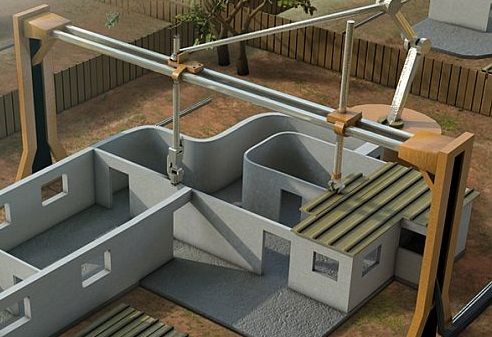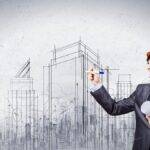Crafting Tomorrow’s Skylines: How 3D Printing is Transforming Modern Construction
In the realm of modern construction, innovation is the name of the game, and 3D printing has emerged as a groundbreaking player that’s reshaping the industry. While the construction sector has historically been seen as slow to adopt technological advancements.
One might think we have suitable technologies for building different structures, we make stable houses, apartments, and offices, is there still room for improvement? Oh yes. Rebuilding whole cities after a natural disaster, giving shelter to homeless people, and generally building more sustainable habitats- are only a few problems that 3D printing can help with.
Speed and Efficiency
One of the most significant advantages of 3D printing in construction is speed. In a matter of hours or days, 3D printers can create entire building components, such as walls or structural elements, that might take weeks to construct manually. This rapid pace can significantly reduce project timelines, making it possible to complete construction projects in record time.
Reduced material waste
That’s because a 3D printer, such as robotic arms, precisely uses the amount of material they need. Producing buildings layer by layer and with lattice structures inside allows for a considerable cost reduction. Not only that, but they are also capable of using recycled materials. With Topology Optimization, creating even more material-efficient models is possible. This software helps to eject not necessary material sections out of a model without
interfering with the functionality.
Customization and Prefabrication
3D printing enables a high degree of customization. Builders can create components tailored to specific projects or individual requirements. This customization is particularly valuable in the growing trend of prefabrication, where building elements are manufactured off-site and assembled on-location. 3D-printed prefabricated components fit together seamlessly, reducing on-site labour, and simplifying construction logistics.
Innovative style
The creative solutions that 3D printing delivers to the building business are the final but equally significant advantage. Using 3D technologies from the beginning of the design process might help you plan your projects better. They begin with the CAD blueprints for the buildings, which are detailed technical drawings. A 3D construction model can be created based on those designs to match the clients' expectations and demonstrate the best design options.
In conclusion, the speed, flexibility, and sustainability of 3D printing are transforming modern construction. Technology's involvement in building will grow as it develops, opening the door for quicker, more effective, and creative building solutions. The way we conceive and build the buildings of the future is changing thanks to 3D printing, whether it’s by producing cheap housing or by pushing the limits of architectural design.
Disclaimer: This content is provided solely for your review. Erusu Consultants takes no liability for this article. The reader is advised to form their own opinion. Please consult a Structural Engineer before making any final decisions.






